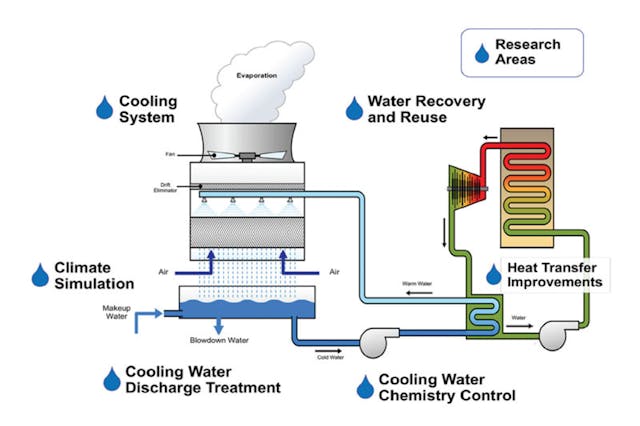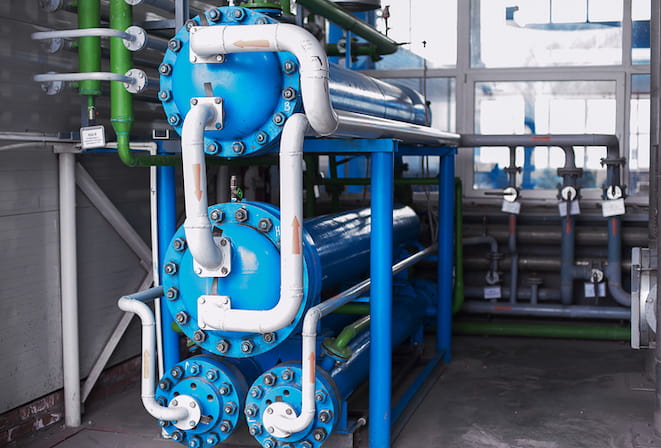A Deep Dive into Advanced CFD Modeling in DVS Heat Transfer Systems
The Function of Heat Transfer Systems in Sustainable Energy Solutions for the Future
Heat transfer systems are crucial in the pursuit for sustainable energy options. They optimize thermal energy monitoring, enhancing the performance of renewable technologies. By employing systems like radiation, convection, and transmission, these systems reduce power losses. Their function in solar thermal and geothermal applications is especially significant. As technologies arise, the possibility for additional advancements elevates crucial inquiries concerning future energy techniques. What growths will form the landscape of sustainable energy?
Understanding Heat Transfer Systems

The Value of Thermal Power Management
Effective thermal energy monitoring is necessary for making best use of energy efficiency and decreasing waste in different systems. By managing temperature level and enhancing Heat transfer processes, organizations can substantially decrease energy usage and functional prices. Effective monitoring entails the implementation of sophisticated modern technologies and practices that check and manage thermal conditions within systems, making sure that power sources are utilized effectively. Additionally, proper thermal energy monitoring adds to reducing greenhouse gas emissions, lining up with global sustainability goals. It additionally boosts system integrity and efficiency, bring about enhanced item high quality and longer equipment life expectancy. Ultimately, focusing on thermal energy administration is an essential action in the direction of producing much more lasting power options and cultivating a liable method to power usage in residential and industrial contexts.
Applications of Heat Transfer in Renewable Power
While various renewable resource sources promise sustainability, the efficient application of Heat transfer plays a crucial duty in their effectiveness. In wind power systems, Heat transfer is used for turbine element air conditioning, enhancing efficiency and longevity. Geothermal power counts on efficient Heat exchange in between the earth's subsurface and the liquid circulating in the system, optimizing energy extraction. Biomass power processes likewise profit from Heat transfer, as it helps in transforming organic products right into functional gas through pyrolysis and gasification. In addition, in hydropower, preserving excellent temperature levels in tanks can improve power outcome. Each of these applications shows the essential value of Heat transfer systems in boosting renewable resource modern technologies, inevitably contributing to an extra lasting energy future.
Enhancing Solar Thermal Power Efficiency
As solar thermal power systems remain to develop, boosting their effectiveness has ended up being necessary for taking full advantage of energy result. Breakthroughs in Heat transfer innovations, such as improved thermal storage products and innovative Heat exchangers, play a significant duty in boosting performance. By using advanced products that have exceptional thermal conductivity, systems can record and move Heat more properly. In addition, integrating radar that comply with the sun's path warranties that enthusiasts receive optimal solar exposure throughout the day. Using nanotechnology in solar absorbers can better enhance power absorption prices. Incorporating automatic control systems assists manage temperature levels and take care of energy circulation successfully, leading to reduced losses and boosted total system effectiveness. These enhancements pave the method for even more lasting solar thermal power services in the future.
Geothermal Home Heating: A Sustainable Solution
Geothermal heating offers a practical option for sustainable power, using considerable environmental benefits with decreased greenhouse gas exhausts. Its performance and cost-effectiveness make it an eye-catching choice to standard furnace. Nevertheless, challenges associated with execution has to be resolved to optimize its prospective impact.
Environmental Advantages of Geothermal
Although typical heating approaches contribute substantially to greenhouse gas emissions, geothermal home heating presents an engaging option that decreases environmental impact. By using the Planet's interior Heat, geothermal systems utilize a renewable resource source, significantly minimizing dependence on fossil gas. This approach produces marginal carbon discharges, making it a cleaner option for business and household home heating. In addition, geothermal systems promote power effectiveness, as they need much less energy compared to conventional heating unit. DVS Heat Transfer Systems. The usage of geothermal power additionally helps in decreasing air pollution, boosting neighborhood air quality and public wellness. As a lasting remedy, geothermal home heating sustains climate modification reduction initiatives, positioning itself as a necessary element in the shift in the direction of a greener future
Effectiveness and Cost-Effectiveness
How does geothermal home heating measure up in terms of effectiveness and cost-effectiveness compared to standard home heating systems? Geothermal home heating demonstrates premium efficiency, often achieving a coefficient of performance (COP) of 3 to 5, meaning it produces 3 to 5 devices of Heat for every single system of power consumed. This efficiency converts into reduced operating expense, specifically in regions with secure geothermal sources. First setup costs can be greater than traditional systems; nonetheless, lasting financial savings on energy expenses and minimized upkeep expenses can balance out these ahead of time investments. In addition, lots of governments incentivize geothermal systems via refunds and tax credit scores, boosting their cost-effectiveness. Overall, geothermal heating becomes a lasting and economically practical choice to even more standard heating remedies.
Application Challenges and Solutions
Various difficulties can restrain the prevalent implementation of geothermal heating unit, regardless of their clear benefits as a sustainable power remedy. High initial installation prices commonly deter investors and house owners, making funding a considerable obstacle. In addition, the geographical restrictions of suitable geothermal sites restrict accessibility in certain areas. Neighborhood guidelines and allowing processes can additionally make complex task advancement, causing delays. Furthermore, public understanding and understanding of geothermal systems continue to be reduced, hindering acceptance. To deal with these difficulties, targeted education campaigns can boost open secret, while government incentives might reduce monetary concerns. Working together with local authorities to streamline policies may help with smoother project authorizations, inevitably promoting the fostering of geothermal home heating as a viable, sustainable power alternative.
Innovations in Heat Transfer Technologies
Technologies in Heat transfer modern technologies play an essential function in enhancing energy performance and sustainability. Advanced Heat exchangers and stage change materials go to the click for more leading edge of these advancements, offering substantial improvements in thermal management. These modern technologies not only maximize energy usage however also add to decreasing environmental influence in numerous applications.
Advanced Heat Exchangers
Advanced Heat exchangers play a vital role in boosting power effectiveness across numerous applications in sustainable power services. These devices promote the transfer of Heat in between two or even more fluids, markedly reducing power usage in processes such as commercial heating, air conditioning, and power generation. Advancements in materials and style, such as making use of nanofluids and portable configurations, have actually resulted in improved thermal efficiency and reduced size needs. Furthermore, innovations in digital tracking and control systems enable enhanced operation, more increasing efficiency. By lessening waste Heat and taking full advantage of power healing, advanced Heat exchangers add to lower carbon footprints and sustain the change toward eco friendly innovations. Their proceeded development is crucial for attaining worldwide energy sustainability goals.
Stage Adjustment Products
The integration of stage modification products (PCMs) right into Heat transfer innovations represents a considerable improvement in energy monitoring and efficiency. PCMs absorb and launch thermal energy during their phase adjustments, enabling reliable temperature level guideline in building products and power systems. By saving excess Heat during peak durations and releasing it when need rises, PCMs add to pack shifting and energy preservation - DVS Heat Transfer Systems. This capacity improves the performance of renewable resource systems, particularly in solar thermal applications. In addition, PCMs can improve the thermal convenience of interior settings, minimizing dependence on traditional home heating and cooling techniques. As innovations in PCM formulas remain to emerge, their function in lasting power options is poised to expand, using appealing opportunities for future research study and application

Future Potential Customers for Heat Transfer in Lasting Power
As the demand for sustainable power remedies continues to increase, the role of Heat transfer systems is becoming progressively critical in shaping future innovations. Technologies in designs and products are anticipated to boost efficiency in Heat transfer, minimizing power losses in various applications. The integration of sophisticated thermal storage space systems, such as phase modification products and thermochemical storage, will enable better management of power resources. Research study into nanofluids and biomimetic Heat exchangers might further enhance thermal performance. The fostering of smart technologies will enable for real-time monitoring and flexible control of Heat transfer processes. These developments are poised to considerably add to the general efficiency and sustainability of energy systems, leading the way for an extra energy-efficient future.
Often Asked Concerns
How Can Individuals Apply Heat Transfer Systems in your home?

Individuals can implement Heat transfer systems in your home by mounting energy-efficient appliances, using radiant heat, and maximizing insulation. These steps improve power performance, decrease costs, and advertise lasting techniques in property environments.

What Are the Expenses Related To Mounting Heat Transfer Equipments?
The prices connected with setting up Heat transfer systems vary widely, typically encompassing equipment, installation labor, and maintenance. Variables such as system kind, home dimension, and regional policies considerably affect the general expenditure included.
Are There Government Rewards for Heat Transfer System Installations?
Government motivations for Heat transfer system setups vary by region and can include tax obligation credit histories, gives, and refunds. These economic benefits intend to urge adoption, ultimately advertising power efficiency and reducing ecological effect within communities.
Just How Do Heat Transfer Equipments Effect Energy Bills?
Heat transfer systems significantly affect energy costs by enhancing power efficiency. By enhancing the transfer of Heat, these systems lower power consumption, causing lower utility prices and creating a much more lasting technique to power management.
What Upkeep Is Needed for Heat Transfer Systems?
Maintenance for Heat transfer systems includes routine assessments, click here now cleaning of components, inspecting liquid levels, ensuring correct insulation, and replacing worn components. These tasks assist preserve performance, avoid breakdowns, and prolong the system's functional lifespan.
These systems promote the movement of thermal energy from one medium to one more, making it possible for the transfer of Heat for cooling, energy, or heating generation purposes. Geothermal energy depends on effective Heat exchange between the earth's subsurface and the fluid flowing in the system, making the most of energy extraction. Additionally, geothermal systems advertise energy performance, as they require less power contrasted to conventional heating systems. Advanced Heat exchangers play an important function in improving energy performance across different applications in sustainable power solutions. Heat transfer systems especially affect power basics bills by maximizing power efficiency.